Archivo PDF con descarga inmediata. Tutorial Paso a Paso en Inglés y Español. Se adjunta una Tabla de Progreso para que puedas avanzar sin errores!
El Chal Amaru nace de mi pasión por la historia y cosmogonía de las culturas originarias sudamericanas.
Cuando estuve viviendo en Cusco, Perú, hace ya muchos años, aprendí que el universo espiritual de los Incas se dividía básicamente en tres niveles:
- El mundo superior: Hanan Pacha, representado por el cóndor o Kuntur en quechua, un ave que es capaz de volar a 5000 metros de altura y para los Incas era el único animal capaz de comunicarse con el mundo de los dioses y las estrellas.
- El mundo terrenal: Kay Pacha o mundo de los vivos, representado por el Puma (término original quechua), símbolo de fuerza, sabiduría e inteligencia. Para los incas era un animal divino que representaba el poder del mundo. Se cree que Cusco, la capital del imperio de los Incas, tiene forma de puma. La cabeza de este animal se encuentra en la fabulosa fortaleza de Sacsayhuaman. La cola está en el templo de Coricancha.
- El mundo de abajo: Ukhu Pacha o mundo de los muertos, representado por la serpiente o Amaru en quechua. Representa el infinito.
Cada nivel, representado por estos animales sagrados, están presentes en el día a día de esta cultura, en todos sus actos religiosos y también en la arquitectura.
Nunca voy a olvidar mis sensaciones mientras caminaba por las calles de Cusco. Casi todas las construcciones están hechas con grandes piedras unidas perfectamente entre sí. Los suelos también son de piedra. A pesar del pasar de los años y de la colonización, al caminar por allí, terminas siendo consciente de la grandeza de esta cultura y de todas las vivencias que sucedieron allí mismo, en el mismo suelo y en las mismas piedras que estás tocando.
Tanto la serpiente Amaru como las piedras están representadas en este Chal.
Espero que te guste!
Notas de Construcción:
Este Chal tiene una construcción Boomerang, quiere decir que para lograr esta forma triangular asimétrica, hay que comenzar a tejer en una de las puntas del Chal e ir realizando aumentos y disminuciones coordinadas en los extremos tanto al principio como al final de cada Hilera impar o del LD de la labor. Se teje en plano, es decir que al final de cada hilera del LD, giramos la labor, y continuamos trabajando por el LR.
La técnica utilizada en algunas de sus secciones es el Mosaic Knitting // Tejido de Mosaico y Puntos deslizados.
Encontrarás adjuntos 2 Gráficos de Mosaic Knitting los cuales deberás leer de abajo hacia arriba, en vueltas impares de derecha a izquierda y en vueltas pares de izquierda a derecha. Los símbolos de cada punto se leen literalmente como indica en cada gráfico, sin importar si te encuentras del LD o LR de la labor.
En las hojas finales, encontrarás una tabla de progreso para que puedas ir apuntando cada vez que finalizas una Hilera de tu proyecto. Podrás controlar la cantidad de puntos.
Todas las técnicas se explican en el apartado Técnicas Especiales.
Lanas:
Para este diseño utilicé hilados Balayage de Pascuali Filati Naturali.
Cada ovillo es de 50 gr/175 m/1 ¾ oz/190 yd. Composición 80% Baby Alpaca, 20% Organic Merino Extrafino Superwash, free mulesing. Calibre Fingering.
Colores:
- CA: Chachani (negro), 50 gr
- CB: Ishinca (gris claro), 50 gr
- CC: Piura (mostaza), 50 gr
- CD: Tacna (Fucsia), 50 gr
Herramientas:
- Agujas de punto 3.5 mm / US4
- Si vas a utilizar circulares, te recomiendo un cable de al menos 80 cm.
Si quieres que te envíe tu patrón a tu Biblioteca de Ravelry tienes que escribir en NOTAS DEL PEDIDO (al realizar tu compra) tu ID de Ravelry. Te lo enviaré lo antes posible!
Muchas gracias y espero que te guste!
Skill Level: Easy
The Amaru Shawl is born from my passion for the history and cosmogony of South American native cultures.
When I was living in Cusco, Peru, many years ago, I learned that the spiritual universe of the Incas was basically divided into three levels:
- The upper world: Hanan Pacha, represented by the condor or Kuntur in Quechua, a bird that is capable of flying 5000 meters high and for the Incas it was the only animal capable of communicating with the world of gods and stars.
- The underworld: Kay Pacha or world of the living, represented by the Puma (original Quechua term), symbol of strength, wisdom and intelligence. For the Incas it was a divine animal that represented the power of the world. It is believed that Cusco, the capital of the Inca empire, is shaped like a puma. The head of this animal is in the fabulous fortress of Sacsayhuaman. The tail is in the temple of Coricancha.
- The world below: Ukhu Pacha or world of the dead, represented by the snake or Amaru in Quechua. It represents the infinite.
Each level, represented by these sacred animals, is present in the daily life of this culture, in all its religious acts and also in architecture.
I will never forget my feelings while walking through the streets of Cusco. Almost all buildings are made with large stones perfectly joined together. The floors are also made of stone. In spite of the passing of the years and of the colonization, when walking through there, you end up being aware of the greatness of this culture and of all the experiences that happened there, on the same ground and on the same stones that you are touching.
Both the Amaru snake and the stones are represented in this Shawl.
Hope you like this design!
Construction Notes:
This Shawl has a Boomerang construction, which means that to achieve this asymmetrical triangular shape, you have to start knitting at one of the tips of the Shawl and carry out coordinated increases and decreases at the beginning and at the end of each odd row or of the RS of the work. It is knitted in flat, at the end of each row of the RS, we turn the work, and continue working for the WS.
The technique used in some of its sections is the Mosaic Knitting // Slip Stitch.
You will find attached 2 Mosaic Knitting Schemes which you should read from bottom to top, in odd rows from right to left and in even rows from left to right. The symbols of each stitch are read literally as indicated in each scheme, regardless of whether you are in the RS or WS of the work.
In the final sheets, you will find to progress chart so you can keep pointing every time you finish a Row of your project. You can control the total of stitches.
All techniques are explained in the Special Techniques section.
Yarns:
For this design I used Balayage yarns from Pascuali Filati Naturali. Each ball is 50 gr / 175 m / 1 ¾ oz / 190 yd. Composition 80% Baby Alpaca, 20% Organic Extrafine Merino Superwash, free mulesing. Fingering Yarn Weight.
Colors:
- CA: Chachani (black), 50 gr.
- CB: Ishinca (light grey), 50 gr.
- CC: Piura (mustard), 50 gr.
- CD: Tacna (fuchsia), 50 gr.
Needles:
3.50 mm / US4
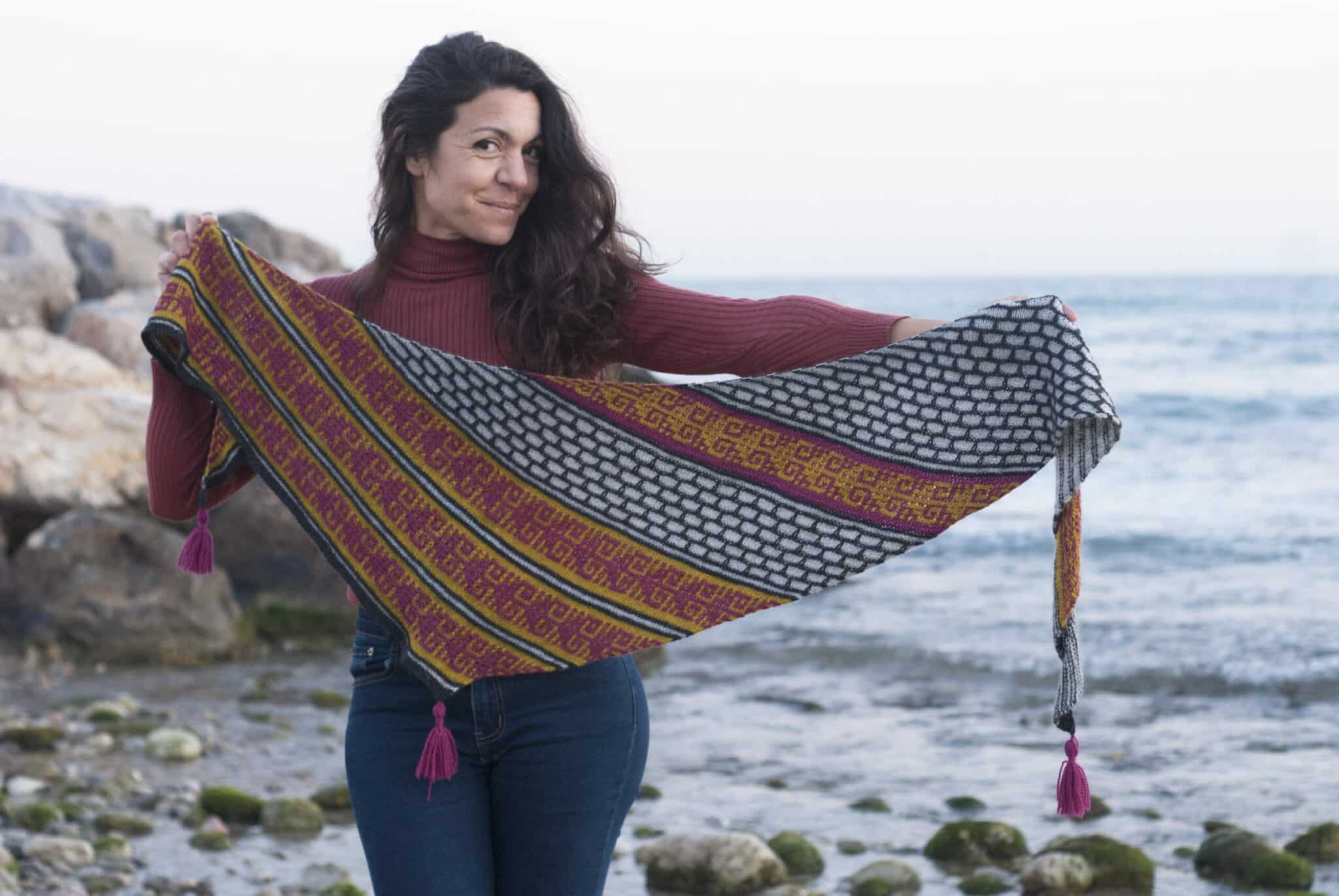
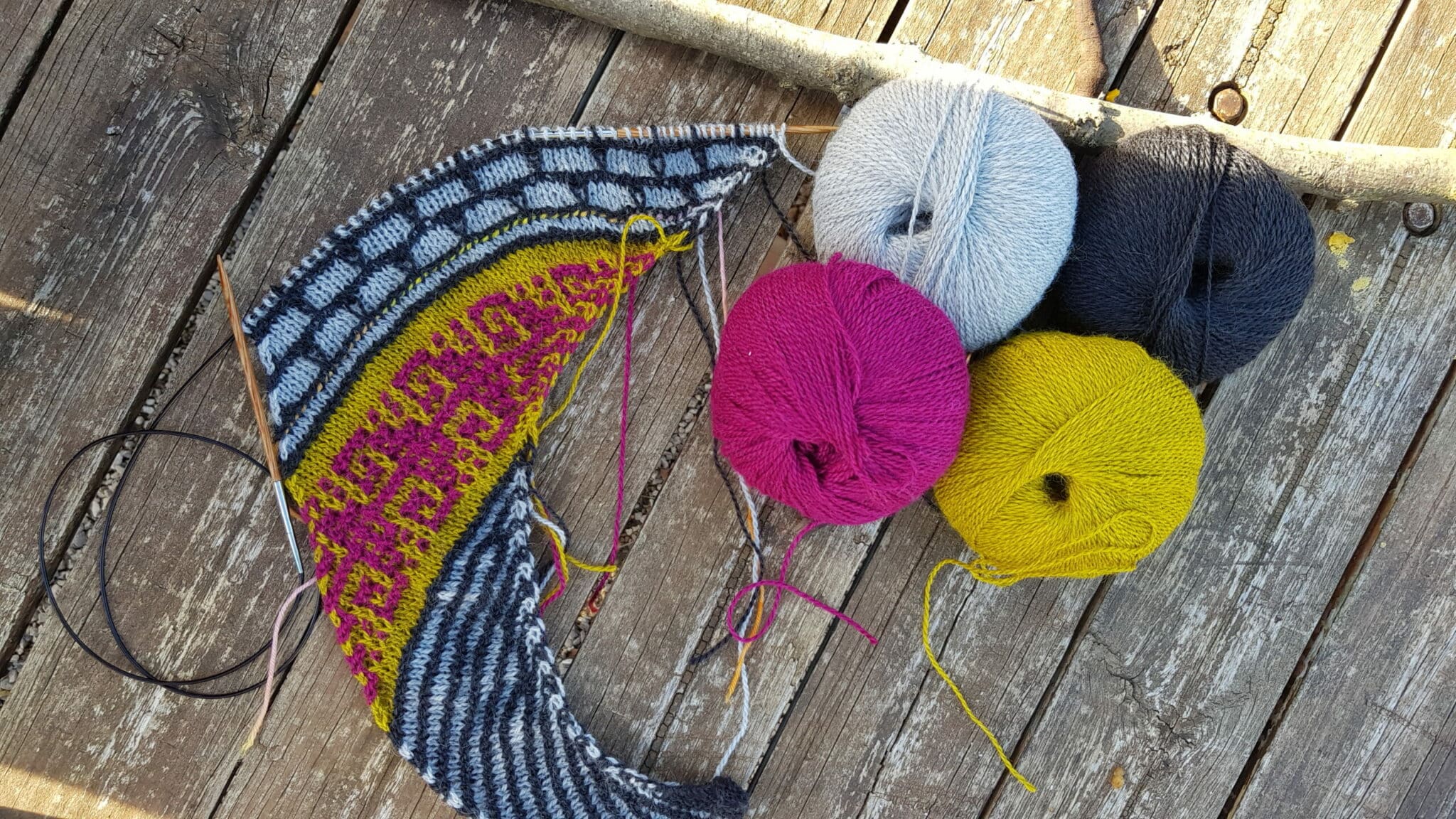

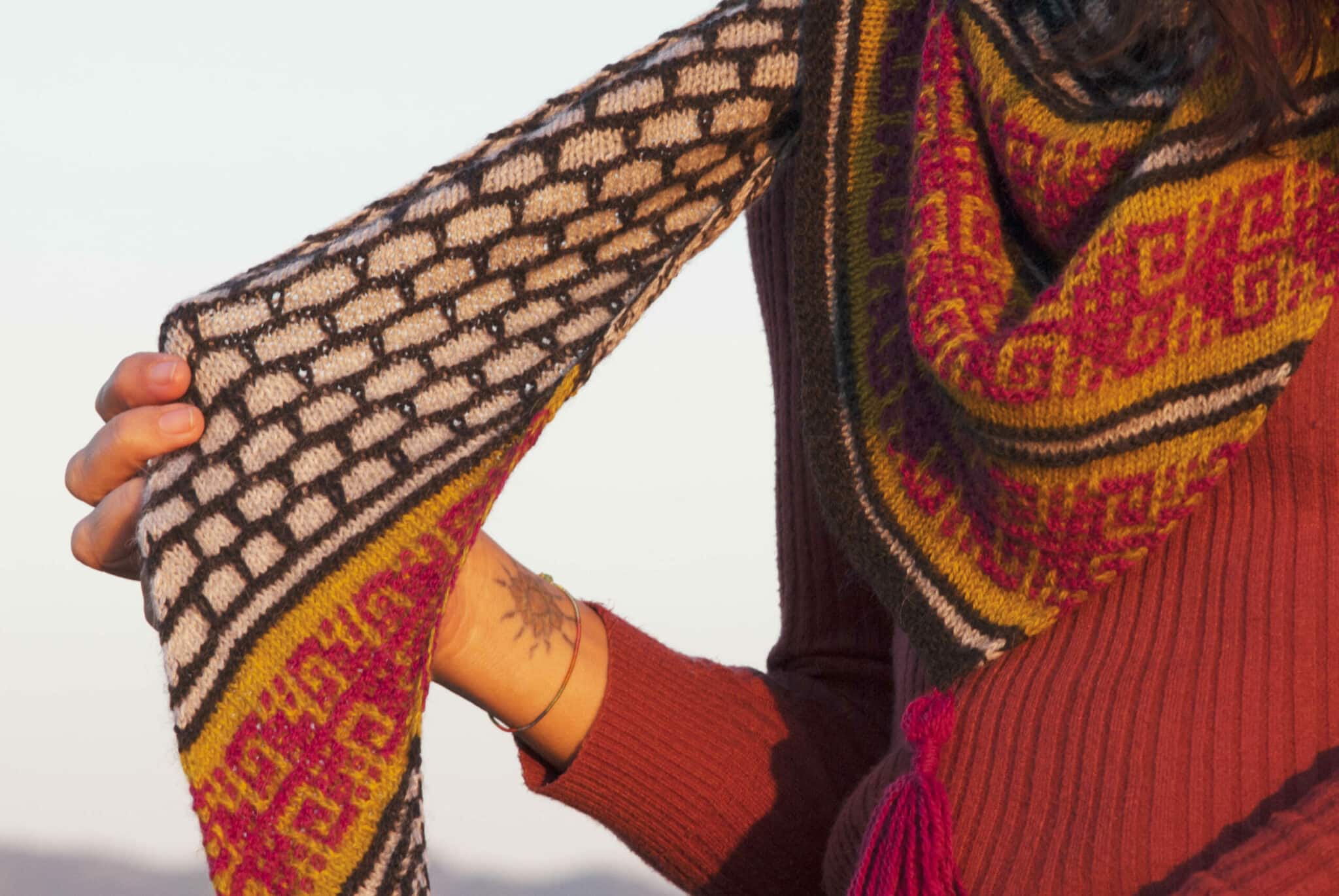

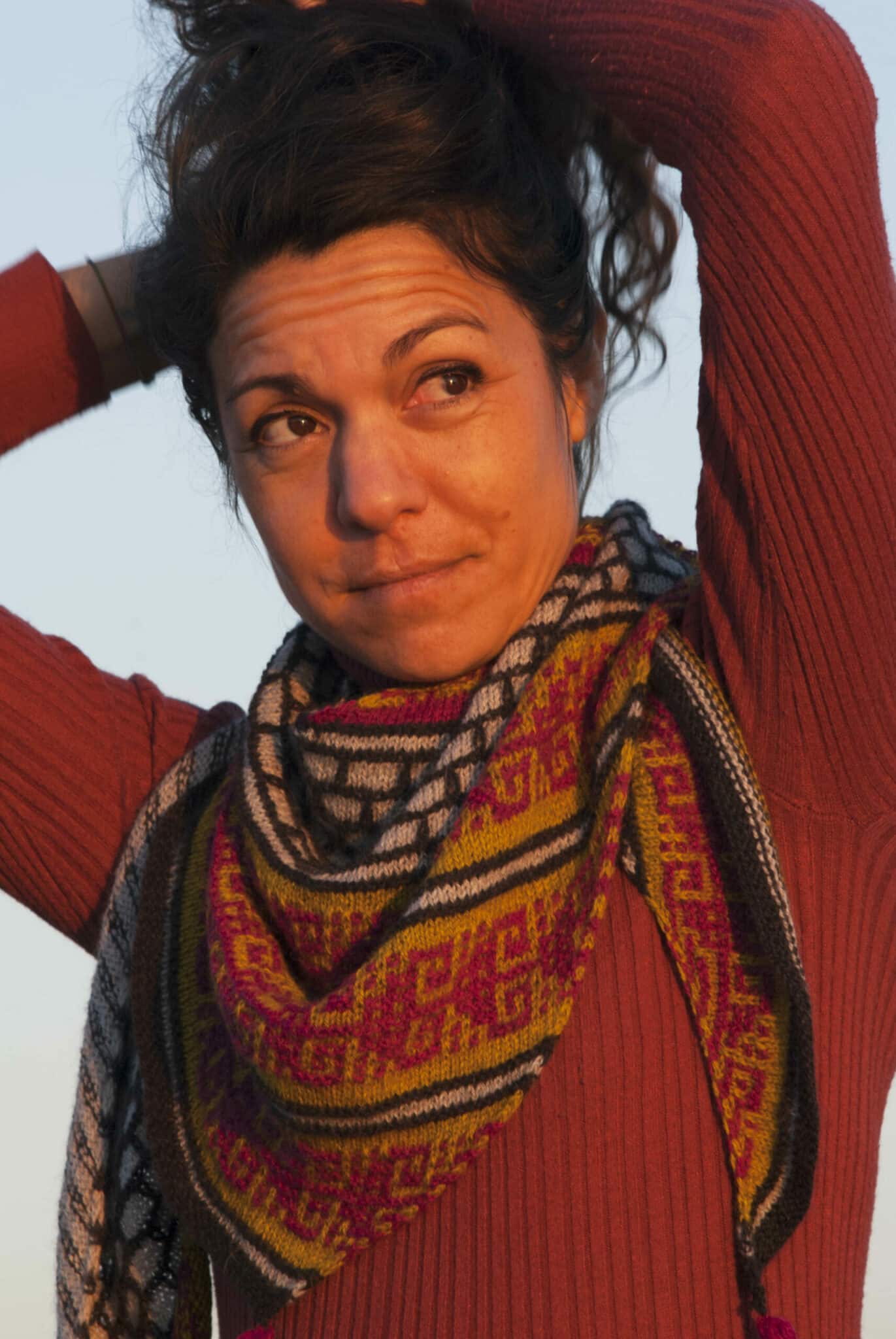
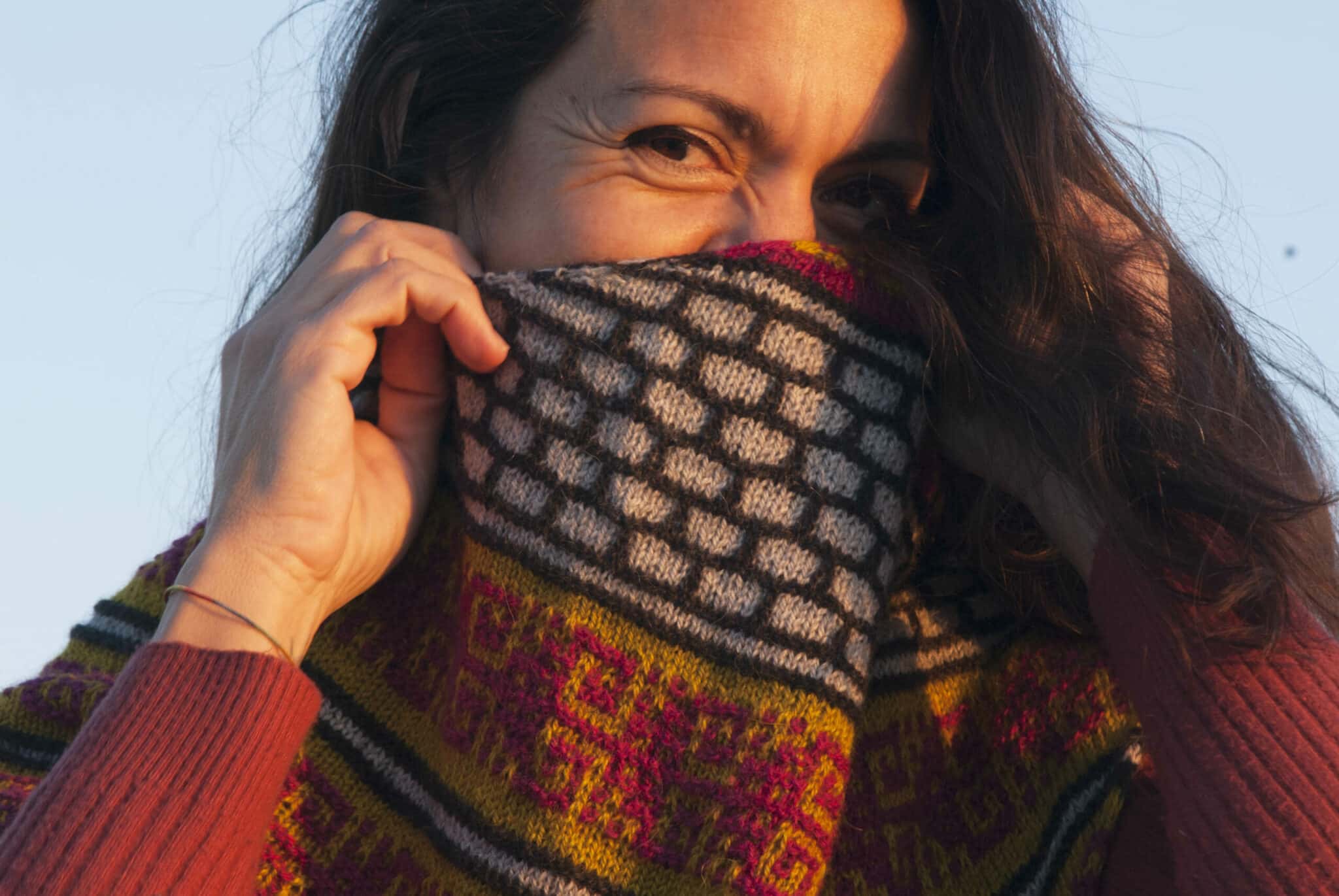








Valoraciones
No hay valoraciones aún.